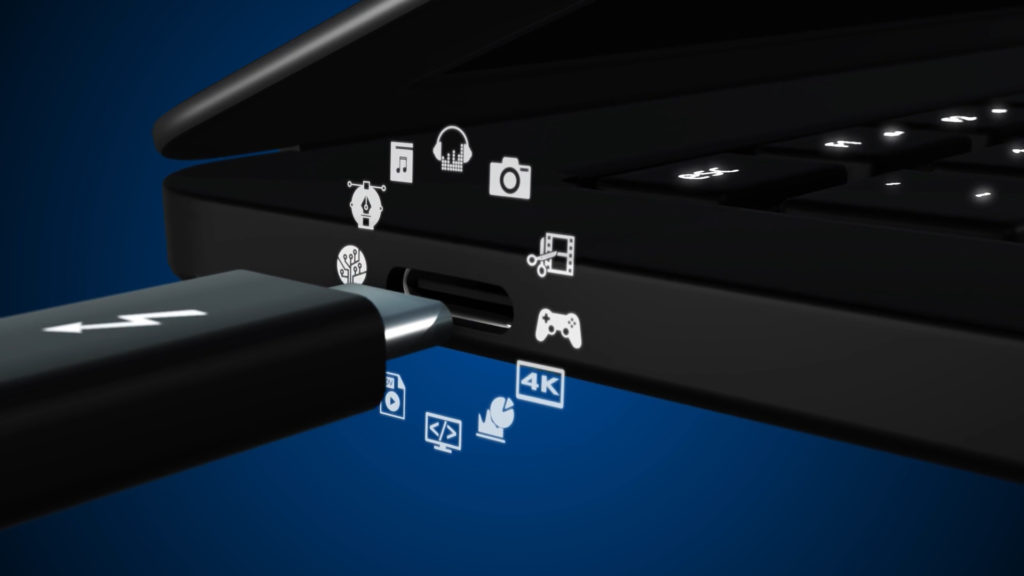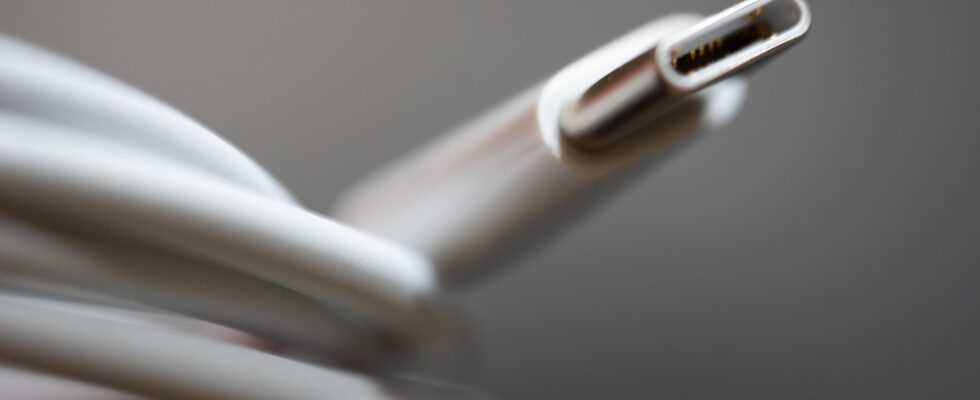The USB Implementers Forum, which deals with the USB standard, announces USB4. A new generation for the famous USB port which is based on Thunderbolt 3.
USB4, what is it?
Are we still introducing USB? Acronym for Universal Serial Bus, this standard launched in 1996 makes it possible to connect peripherals to a computer. Very widely used, it has among its strengths the ability to connect hot to transmit data (hot plug), that is to say while the system is running, but also to recharge devices (such as a smartphone) or simply to supply them with energy.
It is the USB Implementers Forum (or USB-IF) which has been in charge of developing this standard since the beginning. The body brings together big names in the tech industry, such as Microsoft, Intel, IBM or HP. And precisely, the latest version, soberly called USB4, is here. It was announced on March 4, 2019, and its specifications were finalized on September 3 of the same year.
What are the advantages of USB4?
Essentially, a much greater transfer capacity. The USB4 standard is capable of transferring data at up to 40 Gbit/s, where the previous generation can at best reach 20 Gbit/s (USB 3.2 Gen 2×2). To benefit from such a speed, it will nevertheless be necessary to use a certified 40 Gbit/s cable. Otherwise, the link will be slower: it will be based on a previous standard.
The other advantage of USB4 is backward compatibility with previous levels, USB 2.0 and USB 3.2 (including its intermediate developments: USB 3.2 Gen 1, known as USB 3.0, USB 3.2 Gen 2, known as USB 3.1, and USB 3.2 Gen 2×2). Thus, there will be no break in use: if you use a USB 2.0 device on a USB4 port, via a USB-A to USB-C adapter, it will work.
USB4 vs USB-C: is there a difference?
Any ! More exactly, these two acronyms do not mean quite the same thing. USB4 is a standard that sort of deals with transfer speed. USB-C on the other hand is a name that denotes a physical form and design of the connector. Moreover, USB4 and USB-C are not opposed: USB4 uses a USB-C connector!
In short, all USB4 ports are USB-C ports, but the reverse is not always true: there are USB-C ports whose transfer capacity is lower than USB4. Indeed, this connector also exists for the USB 3.1, USB 3.1 Gen 2, USB 3.2 Gen 2 and USB 3.2 Gen 2×2 standards. In short, USB4 is about speed, USB-C is about form, to put it simply.
USB4 Specifications
Finally, the USB-IF indicates that the USB4 architecture is based on the Thunderbolt 3 protocol specification, designed by Intel. The American giant presents it as a compact and versatile port that ” can enable lightning-fast data transfer, support two 4K UHD displays at 60Hz, and even fast-charge laptops. »
This is why we note identical performance and characteristics between USB4 and Thunderbolt 3, such as 40 Gbit/s bandwidth, power supply, reversible USB-C connector, support for HDMI 2.0 standards, Displayport 1.2, PCIe 3.0, concurrency and various transfer optimization, etc. Eventually, the two standards should converge into a single standard.
This rapprochement of the two worlds can be observed and continues with the arrival of Thunderbolt 4, which has kept the shape of the USB-C connector. Thunderbolt 4 provides a maximum transfer capacity of 40 Gbit/s, like version 3 and USB 4. What changes, among other things, is the ability of Thunderbolt 4 to provide native support for USB 4 .

USB4 release date
The USB4 specification was published in August 2019 in a first version. Support for this new generation of connectivity really started in 2020, both on the software and hardware side. Gradually, new devices put on the market since 2020 are converting to this standard. This is the case of Apple, for example.
As for major operating systems, a transition to USB4 could also be observed in 2020 and 2021. This is particularly the case for the Linux 5.6 kernel since March 2020, macOS Big Sur, which added support in November 2020, and Windows 11, which has been available since October 2021. As for USB4 cables, they are also appearing on the market.

